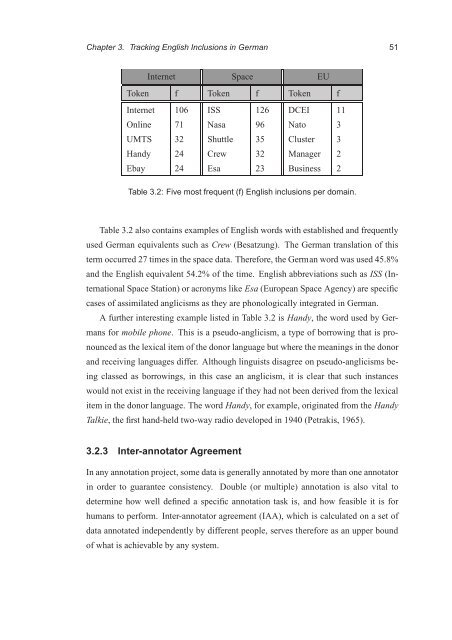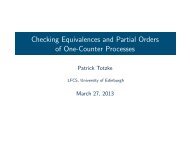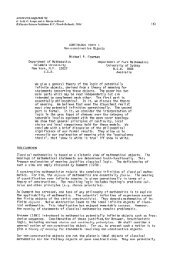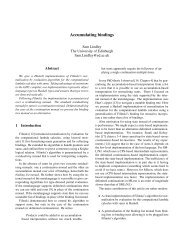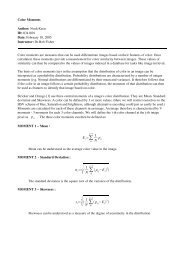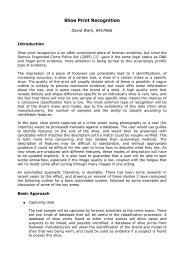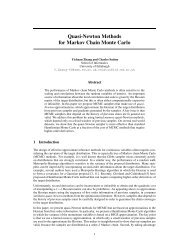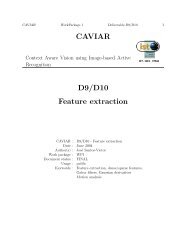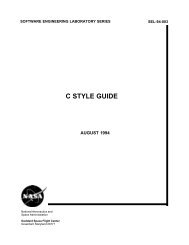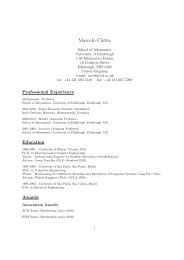PhD thesis - School of Informatics - University of Edinburgh
PhD thesis - School of Informatics - University of Edinburgh
PhD thesis - School of Informatics - University of Edinburgh
You also want an ePaper? Increase the reach of your titles
YUMPU automatically turns print PDFs into web optimized ePapers that Google loves.
Chapter 3. Tracking English Inclusions in German 51<br />
Internet Space EU<br />
Token f Token f Token f<br />
Internet 106 ISS 126 DCEI 11<br />
Online 71 Nasa 96 Nato 3<br />
UMTS 32 Shuttle 35 Cluster 3<br />
Handy 24 Crew 32 Manager 2<br />
Ebay 24 Esa 23 Business 2<br />
Table 3.2: Five most frequent (f) English inclusions per domain.<br />
Table 3.2 also contains examples <strong>of</strong> English words with established and frequently<br />
used German equivalents such as Crew (Besatzung). The German translation <strong>of</strong> this<br />
term occurred 27 times in the space data. Therefore, the German word was used 45.8%<br />
and the English equivalent 54.2% <strong>of</strong> the time. English abbreviations such as ISS (In-<br />
ternational Space Station) or acronyms like Esa (European Space Agency) are specific<br />
cases <strong>of</strong> assimilated anglicisms as they are phonologically integrated in German.<br />
A further interesting example listed in Table 3.2 is Handy, the word used by Ger-<br />
mans for mobile phone. This is a pseudo-anglicism, a type <strong>of</strong> borrowing that is pro-<br />
nounced as the lexical item <strong>of</strong> the donor language but where the meanings in the donor<br />
and receiving languages differ. Although linguists disagree on pseudo-anglicisms be-<br />
ing classed as borrowings, in this case an anglicism, it is clear that such instances<br />
would not exist in the receiving language if they had not been derived from the lexical<br />
item in the donor language. The word Handy, for example, originated from the Handy<br />
Talkie, the first hand-held two-way radio developed in 1940 (Petrakis, 1965).<br />
3.2.3 Inter-annotator Agreement<br />
In any annotation project, some data is generally annotated by more than one annotator<br />
in order to guarantee consistency. Double (or multiple) annotation is also vital to<br />
determine how well defined a specific annotation task is, and how feasible it is for<br />
humans to perform. Inter-annotator agreement (IAA), which is calculated on a set <strong>of</strong><br />
data annotated independently by different people, serves therefore as an upper bound<br />
<strong>of</strong> what is achievable by any system.


